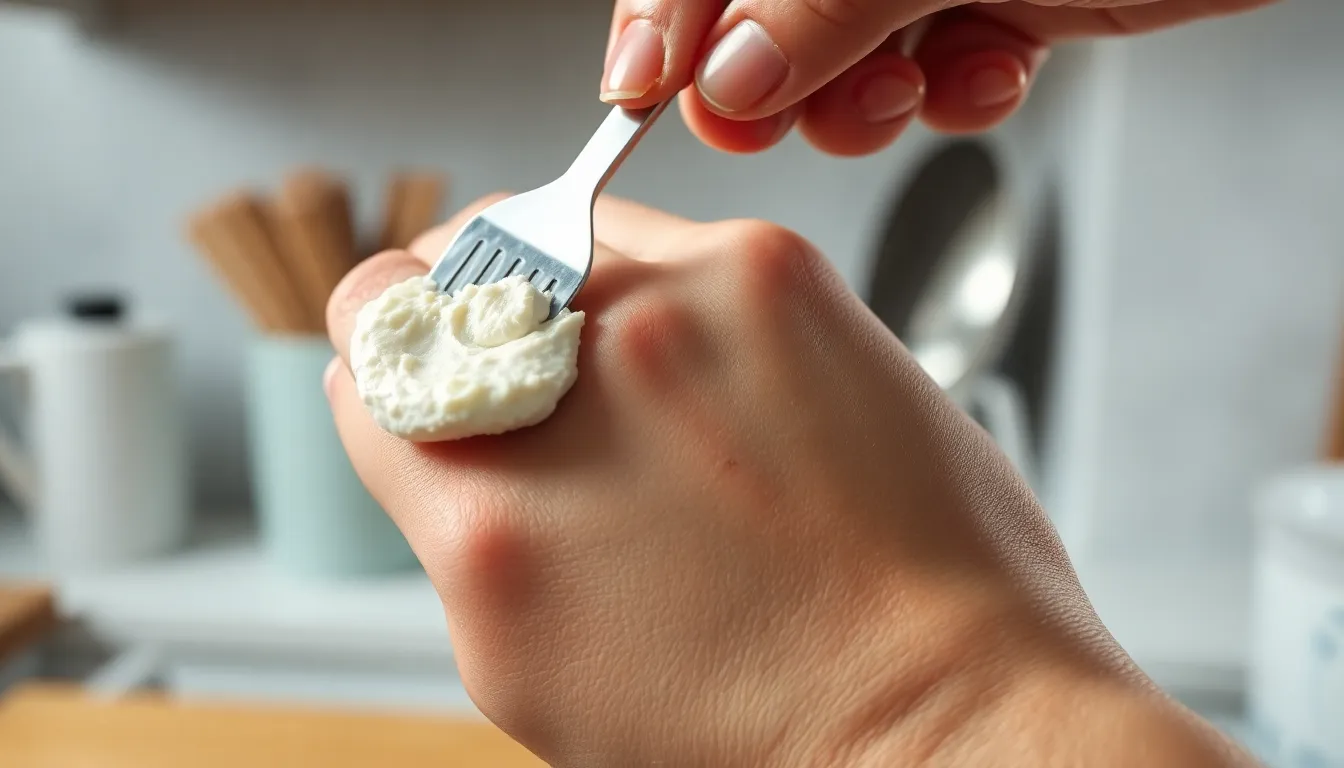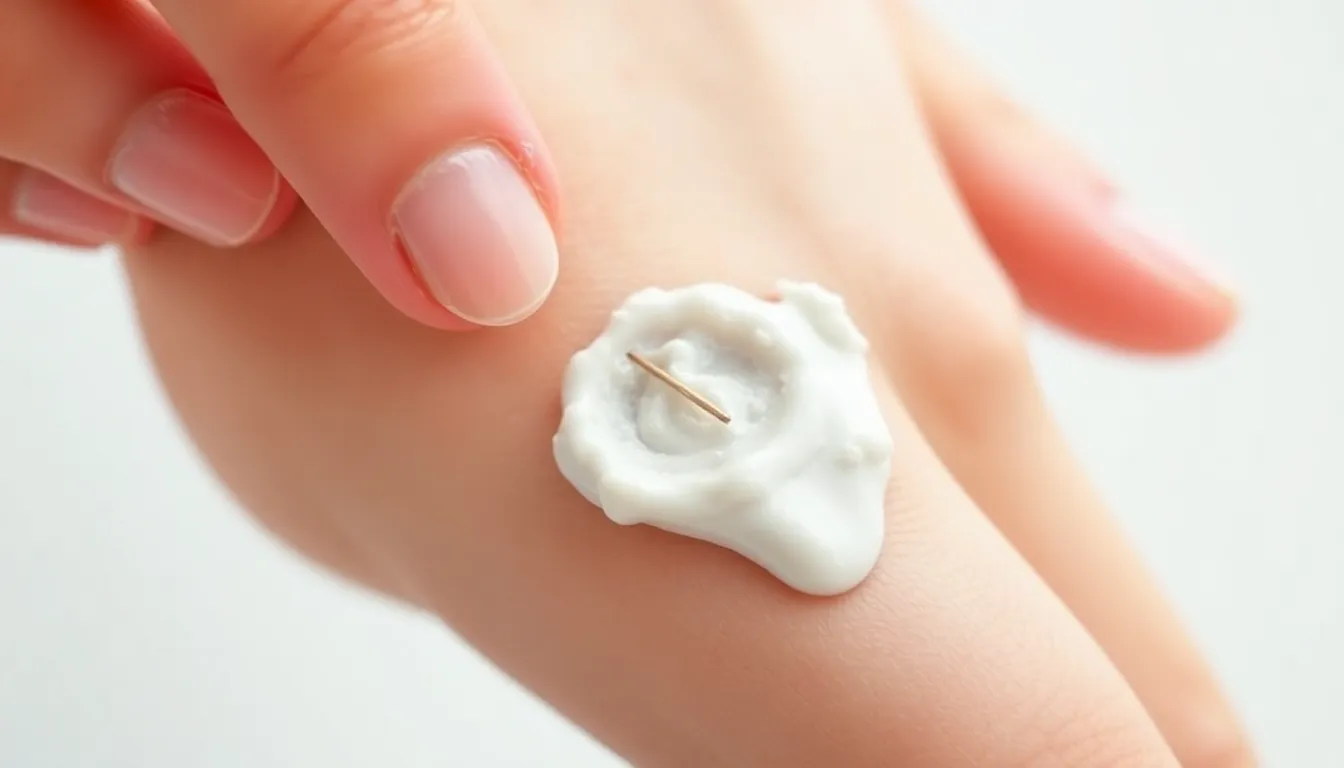The Best Fluffy Pancakes recipe you will fall in love with. Full of tips and tricks to help you make the best pancakes.

Baking Soda Splinter: The Unexpected Trick for Easy Splinter Removal
Picture this: you’re happily baking away when suddenly, a sneaky splinter crashes the party. It’s like that uninvited guest who just won’t leave. But fear not! Baking soda is here to save the day and your finger. This kitchen staple isn’t just for fluffing up your cookies; it’s a hidden hero in the world of splinter removal.
Baking Soda Splinter?
A baking soda splinter refers to the process of using baking soda to help remove a splinter from the skin. This method leverages the unique properties of baking soda, which can draw out splinters effectively. When splinters become embedded in the skin, they can cause discomfort and irritation. Baking soda acts as a gentle abrasive that aids in this removal process.
Splinter removal using baking soda involves creating a paste. The paste consists of baking soda and water, combined to form a thick mixture. This paste covers the area where the splinter is lodged. After applying the paste, a bandage or cloth usually secures it in place. The application should remain for several hours or overnight to maximize effectiveness.
During the waiting period, the baking soda works to swell the skin around the splinter. This swelling may help push the splinter to the surface, making it easier to extract. In many cases, this method eliminates the need for tweezers or other tools for removal. Some users report successful removal after just one application, while others may require multiple treatments.
This technique stands out for its simplicity and effectiveness. Many individuals turn to baking soda splinter removal as a natural and accessible solution. Its availability in most homes makes it an attractive choice for quick, effective treatment.
How Does Baking Soda Help with Splinters?

Baking soda provides an effective approach to splinter removal through its unique properties. It acts as a natural drawing agent, facilitating easy extraction of splinters.
Explanation of the Chemical Reaction
When a baking soda paste forms upon contact with water, it generates a mild alkaline environment. This alkaline nature helps to soften the skin around the splinter. As the mixture remains applied, baking soda draws moisture, which causes the skin to swell. Increased pressure then encourages the splinter’s exit by making it more prominent at the skin surface.
Benefits of Using Baking Soda
Using baking soda presents multiple advantages for splinter removal. First, this method is straightforward, requiring only baking soda and water. Second, it avoids harsh chemicals or painful procedures. The paste reduces discomfort during the splinter extraction process. Many individuals also appreciate that baking soda is an inexpensive option. Given its accessibility, people can easily find it in most kitchens. Lastly, baking soda poses fewer risks of infection, as it promotes a natural healing process.
Steps to Remove a Baking Soda Splinter
Using baking soda can effectively draw out splinters. Follow these steps for optimal results.
Preparing the Baking Soda Paste
Start with two tablespoons of baking soda. Mix this with a small amount of water in a clean bowl until it forms a thick paste. Adjust the water as needed to achieve the desired consistency. The paste should be spreadable but not too watery. After creating the paste, ensure it adheres to the affected area easily. Utilize fresh baking soda for the best results, as older products may lose effectiveness.
Applying the Paste
Apply the paste directly on the splinter. Ensure a thick layer covers the splinter and surrounding skin. After applying, secure it with a bandage or medical tape to keep it in place. A snug fit allows the baking soda to work effectively and draw moisture. Leave the paste on for at least three to four hours or overnight for best results. Removing the bandage and rinsing the area after this period is crucial to see any changes. Observe how the splinter becomes more prominent as the skin swells slightly.
Follow-Up Care
Once the splinter is drawn closer to the surface, prepare for extraction. Use clean tweezers or your fingers to gently pull it out. If the splinter resists, avoid forcing it, as this increases pain or injury. Clean the area with soap and water afterward to minimize infection risk. Applying an antiseptic can further protect the skin. Observe the area for signs of infection, such as redness or swelling. In case of any concerns, seeking medical attention may be necessary.
Alternative Methods for Splinter Removal
Baking soda isn’t the only option for removing splinters. Many effective alternative methods exist for splinter extraction. Each method varies in its approach, offering unique advantages.
Tweezers provide a straightforward solution for splinter removal. Clean tweezers help grasp and pull the splinter out gently. This method works best when the splinter is visible and accessible.
Needle techniques can also aid in splinter extraction. By sterilizing a needle with rubbing alcohol, individuals can carefully lift the splinter from beneath the skin. Precision is key when using a needle, and patients should exercise caution to avoid additional injury.
Duct tape offers another practical method for splinter removal. Placing a small piece of duct tape over the splinter and then pulling it off can sometimes extract it. The adhesive helps grip the splinter, making it easier to remove.
Epsom salt soaks provide a soothing alternative for irritated skin around the splinter. Soaking the affected area in warm water mixed with Epsom salt helps soften the skin, promoting further splinter extraction.
Vinegar acts as a natural drawing agent, assisting with splinter removal. Applying vinegar-soaked cotton to the area can draw the splinter closer to the surface. After a few hours, this method often reveals the splinter for easier access.
Essential oils like tea tree oil possess antimicrobial properties that can reduce infection risk during splinter removal. Applying a diluted drop of essential oil may also aid in softening the skin.
Individuals looking for alternative methods should consider their specific situation and choose what feels comfortable and safe.
Conclusion
Baking soda proves to be a remarkable ally in the battle against splinters. Its natural properties make it an accessible and effective choice for those seeking a gentle solution. By softening the skin and drawing out splinters, baking soda simplifies the removal process while minimizing discomfort.
For anyone dealing with a stubborn splinter, this method offers a straightforward alternative to traditional techniques. Coupled with proper aftercare, it promotes healing and reduces the risk of infection. Whether opting for baking soda or exploring other methods, the key is to find a technique that feels right and ensures comfort during splinter removal.
